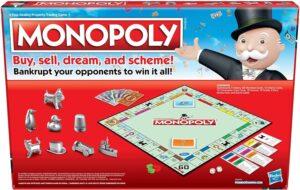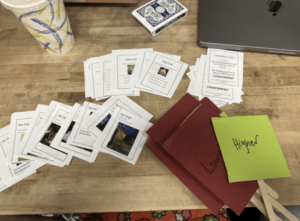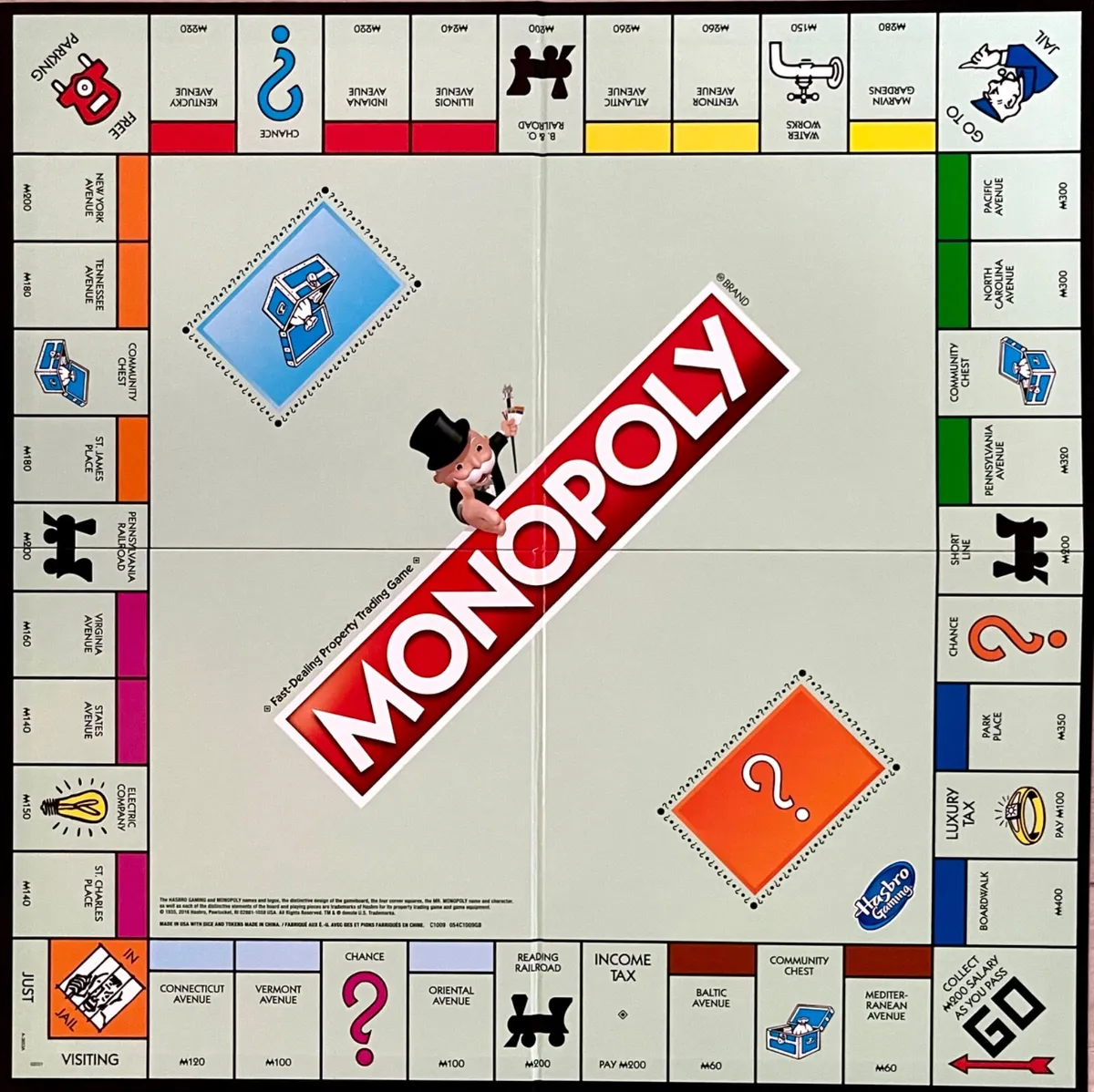
For this week’s critical play, I selected the popular game Monopoly, and played it with some friends when we had a spare hour. Monopoly was created by Lizzie Magie and is intended for players eight years and older, and is a board game. Monopoly has some similar game mechanics to our game, Works of Art, which surrounds building an art collection as an art connoisseur but being wary of fakes and bad deals!
In Monopoly, players accumulate property, develop them with houses and hotels, and aim to bankrupt their opponents, which is reflective of real-world business and property trading dynamics. The game uses money, properties, and chance cards as its central elements, facilitating strategic planning and risk management.
Comparatively, Works of Art is a game designed for 4-6 players where each participant assumes the role of an art connoisseur. The objective is to build an esteemed art collection, involving the acquisition, trading, and selling of artwork cards while identifying and avoiding counterfeits. The gameplay in Works of Art is structured around an auction phase, trade/sell opportunities, and strategic collection building, guided by role cards that dictate collection themes and connoisseur cards that help identify counterfeits.
A fundamental difference between Monopoly and Works of Art is the thematic focus—Monopoly on real estate and Works of Art on art collection. Monopoly’s gameplay fosters competitive strategies where players can directly influence others’ financial states through rent and strategic property acquisition. Conversely, Works of Art encourages a blend of competitive and cooperative play, focusing on the authenticity of artworks and strategic trading to meet collection themes, which adds a layer of depth through the introduction of counterfeit detection.
Moreover, Monopoly’s mechanics rely heavily on luck and player interaction through property trades and chance cards. In contrast, Works of Art includes a more diverse range of player interactions and decisions, such as bidding in auctions and deciding whether to trade or sell artworks, adding a significant strategic element to the game. The introduction of counterfeit artworks and the role of connoisseur cards in Works of Art also introduce a critical thinking component, where players must assess the authenticity of artworks, which is absent in Monopoly.
From a learning perspective, Monopoly teaches negotiation, resource management, and strategic planning. Works of Art, however, provides an educational insight into art history and appreciation, as well as critical thinking skills in assessing artwork authenticity. The game mechanics in Works of Art could benefit from integrating more direct competition elements similar to Monopoly, such as mechanisms that allow players to influence others’ collections more significantly, potentially through actions that could introduce fake artworks into opponents’ collections.
The replay value of both games varies significantly. Monopoly can become repetitive with similar strategies being effective across games. Works of Art, however, proposes variability through different role and connoisseur cards, which can provide new challenges and strategies in each game. Nevertheless, as noted in the prototype document, one potential improvement for Works of Art could be addressing the game’s replayability once players become familiar with the artwork prices and counterfeit indicators.
In conclusion, while Monopoly and Works of Art share fundamental board game mechanics like trading and collection building, they diverge significantly in their thematic execution and strategic depth. Works of Art introduces a unique blend of art appreciation and strategic deceit that distinguishes it from Monopoly’s straightforward property trading. Each game provides distinct learning opportunities and challenges that cater to different player interests and educational goals.

(sample cards from Works of Art)




